Moro Dance
Welcome to the Slow Art Guide for Moro Dance by Galo Ocampo brought to you by National Gallery Singapore.
Inspired by the principles of slow looking and mindfulness, each episode of the Slow Art Guide will take you on a deep dive into one artwork in the Gallery. This experience is about slowing down, taking your time to look at and contemplate visual art and savouring it in a conscious and deliberate manner.
As you immerse yourself in this sensory and reflective process, we invite you to be present with your thoughts, emotions and body sensations, which may feel quite intense or overwhelming at times. If this is the case for you today, please feel free to step away from this audio experience and head over to the Calm Room or any other space that feels safe to rest.
By the end of your experience with the Slow Art Guide, we hope that you will have a deeper emotional connection with the artwork and feel more grounded and rested in the present moment.
Take a moment to be with yourself. Express gratitude to yourself for taking time out of your busy day to care for your mind, body and spirit by connecting with visual art.
Let’s begin with a simple breathing exercise. Focus on the sensation of your breathing. There is no need to change or modify anything. Just breathe. You may choose to close your eyes and rest them or maintain a soft gaze. As you inhale and exhale, observe the rhythm of your breathing. Pay attention to your breath: Is it long and smooth, or short and quick?
If you wish, you can put a hand on your belly. Feel the warmth of your hand on your body and the affection it conveys. Sense the expansion and contraction of your belly with each breath. Allow your body to rest as you breathe. Allow your breath to support you.
Breathe in, breathe out. Breathe in, breathe out.
If your eyes have been closed, slowly open them.
This is Moro Dance by Galo Ocampo.
As we explore this artwork together, feel free to move around it in a way that is most comfortable for you. You may even sit on the gallery floor in front of the artwork.
We will give you some time to take in the artwork on your own. Think about what you are seeing in front of you and how it makes you feel.
What catches your eye immediately and how does the work make you feel? What are you most curious about?
Now, let’s take a look at the artwork together, beginning with the central focus of the artwork—the dancer. Notice the graceful and precise positions of her limbs, down to the sharp and clean angles of her hands and the arch of her feet.
Observe how she seems to be moving her body with skill and ease, the lines of her movement both strong and fluid. Her posture demonstrates the control that she has over her own body.
If you feel comfortable doing so, try out her pose. Position your arms as she does, paying attention to the bold shape of her fingers and the lift in her shoulder. Imagine the weight and feel of gold bangles on your arms, clinking as you move.
Look closely at the shape of her stance. Notice how her legs curve gracefully, with taut and strong muscles. Imagine the power in them. You may wish to try this stance for yourself and mimic the bend in her knees and the high arch of her feet. How does this stance feel for your body?
Next, focus on her face. Her eyes are closed. Tranquil and serene, she seems almost oblivious to anything that may be happening around her, beyond the flowing movements of her body. What do you think she is thinking of or feeling in this moment? As you watch her, observe what thoughts and emotions arise within you.
Now, take a moment to imagine what you would hear if you were to step into the world of this painting. What type of music would be playing?
Would it be fast-paced or slow? Would it be playing softly in the background or so loud that you can feel it thumping in your veins? How would you move in response to these sounds and colours?
Take a close look at the stylised floral patterns in the background—the twisting, curved motifs, reminiscent of the lash of a whip. What do they represent to you? Are they the backdrop of a stage she is dancing on, or a depiction of nature in her surroundings? Do they depict the melody of the music, or the voices of her audience singing?
Perhaps they depict the dancer’s interior world. After all, the dancer seems to have entered a flow state and has let her body take control. Mind and body are in perfect harmony. She is one with the swirling patterns around her.
Now, let’s try a short meditation exercise inspired by the harmony of mind, body and spirit that this dancer has achieved. Meditation can be an important healing exercise. One way of meditating is simply being mindful of what is happening, as it is happening.
Close your eyes gently if you wish to, or maintain a soft gaze. Bring your attention back to your breathing. Take a long breath in and then breathe out gently and slowly. Allow the body to relax and be at ease when breathing out.
Just as the dancer is keenly aware of each of her limbs and moving them with precision and care, take notice of the sensations in each part of your body. Allow yourself to linger a while as you focus on each part of your body.
What do you sense in your shoulders … your arms ... your elbows … your hands … and your fingers?
Take a breath and bring the focus to your belly … your hips … your thighs ... your knees... your calves ... your ankles … your feet … and your toes. Acknowledge whatever sensations you feel in this moment.
Now, with each breath, send warmth and kindness to each part of your body. Express gratitude to each limb, organ and body part, for the way they sustain and support you. Feel it permeate from the base of your feet... to your calves, your thighs... then your belly ... your chest … shoulders … and neck … Let this warmth spread across the features of your face … and finally settle in your mind.
Now, imagine being immersed in the colourful swirls and rhythmic waves of the painting. Allow the colours and music to infuse your body. What is the sensation that settles on your skin or in your muscles? Does it make you want to move? Imagine your body melting into this beautiful background, becoming one with all that is around you.
Gently bring your attention back to your breath and to your whole body. Allow your breath to support you and anchor you.
Breathe in, breathe out. Breathe in, breathe out.
As we come towards the end of this meditation exercise, you may wish to reflect on this question: When was the last time you danced or did something you enjoyed? How can you bring more of these experiences of joy and flow into your life?
If your eyes have been closed, slowly open them and re-familiarise yourself with your surroundings. Take a moment to feel the connection between your breath and the present moment.
Now, focus your gaze on the artwork before you.
Filipino artist Galo Ocampo painted this work in 1946, after the end of World War II, in the year that the Philippines became independent. The Philippines had experienced colonial rule under both the Spanish and American forces and had also undergone the Japanese Occupation. In the wake of these events, many Filipino artists were searching for a national and cultural identity that they could proudly claim as their own. Ocampo was one of them. Together with his contemporaries and collaborators, Ocampo was interested in exploring new ways of presenting modern life from a Filipino perspective.
The “Moro” in Moro Dance is a term that is used to describe the Muslim communities living in the south of the Philippines. The stylised dancing female figure in the centre of the painting showcases her skill in a distinctly non-European dance form, with her arms and fingers extended to emphasise the posture of a Filipino folk dance. The artwork Moro Dance expresses a distinctly indigenous subject and suggests that the Philippines as a nation may be reimagined through art.
We have now come to the end of this episode of the Slow Art Guide.
If you enjoyed this episode, you can check out our other episodes, which feature different artworks. Each Slow Art Guide is developed with unique slow looking and mindfulness practices to help you look at an artwork meaningfully. Artworks featured in the Slow Art Guide are from The Care Collection, a selection of artworks from the National Collection that are thematically organised for programmes that support well-being.
If you need a dedicated space for sensory and emotional rest, you can visit the Calm Room, which is located in Basement 1 of the Gallery’s City Hall Wing. In the Calm Room, you can experience a ten-minute focused mindfulness exercise.
We now invite you to continue your journey through the Gallery. Take your time to appreciate the art all around you.
Artwork details
Frame measure: 94.4 x 74 cm
Frame measure: 109.7 x 89.4 cm

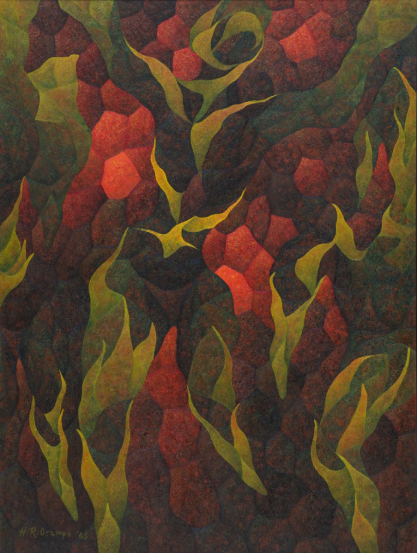
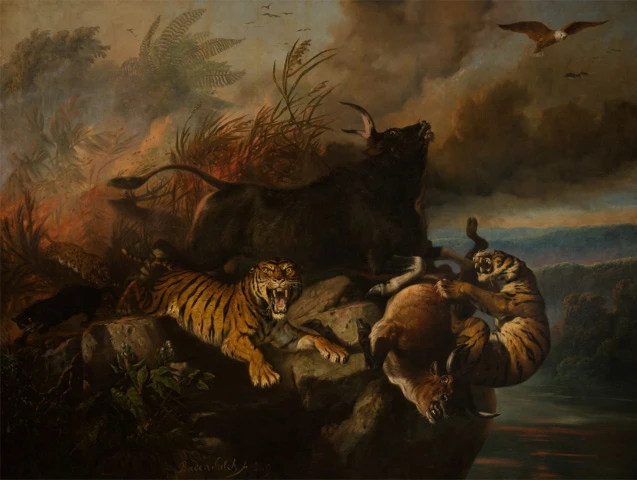
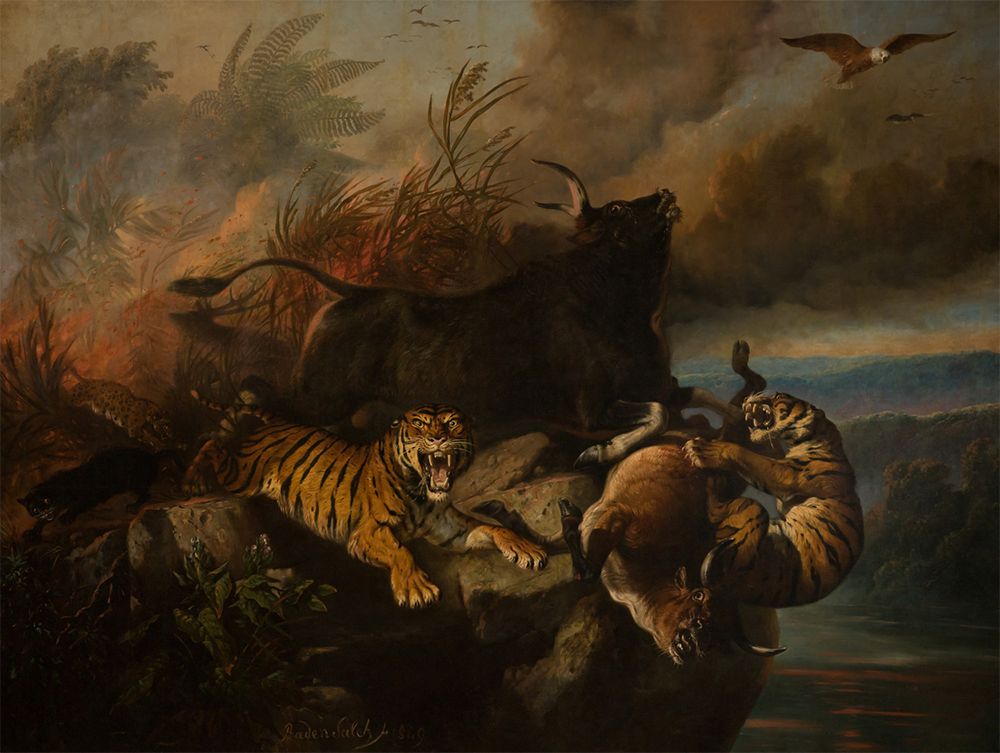
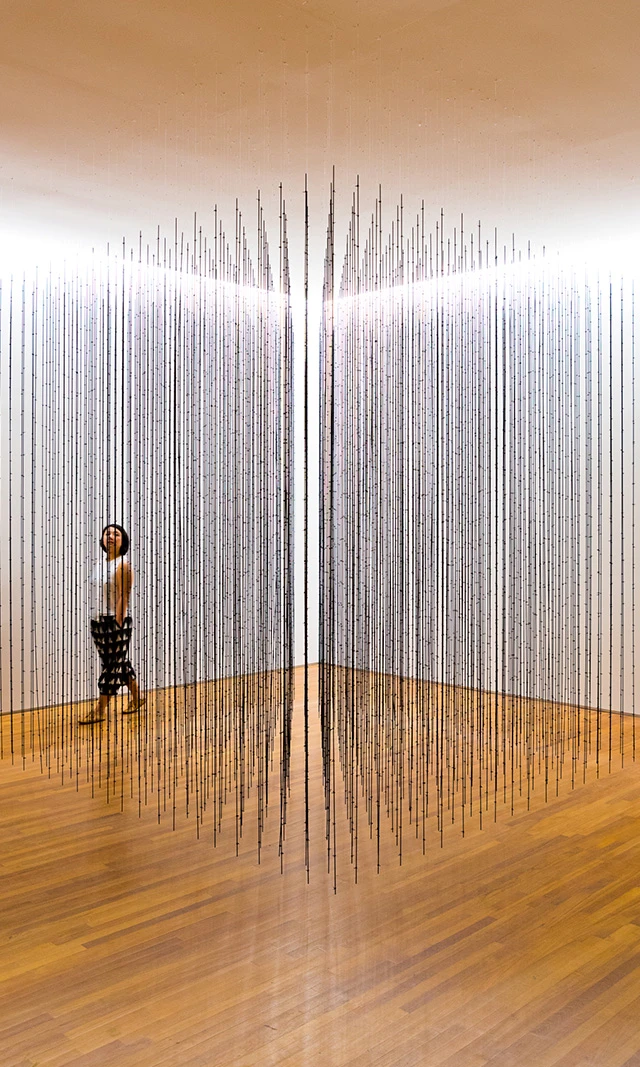
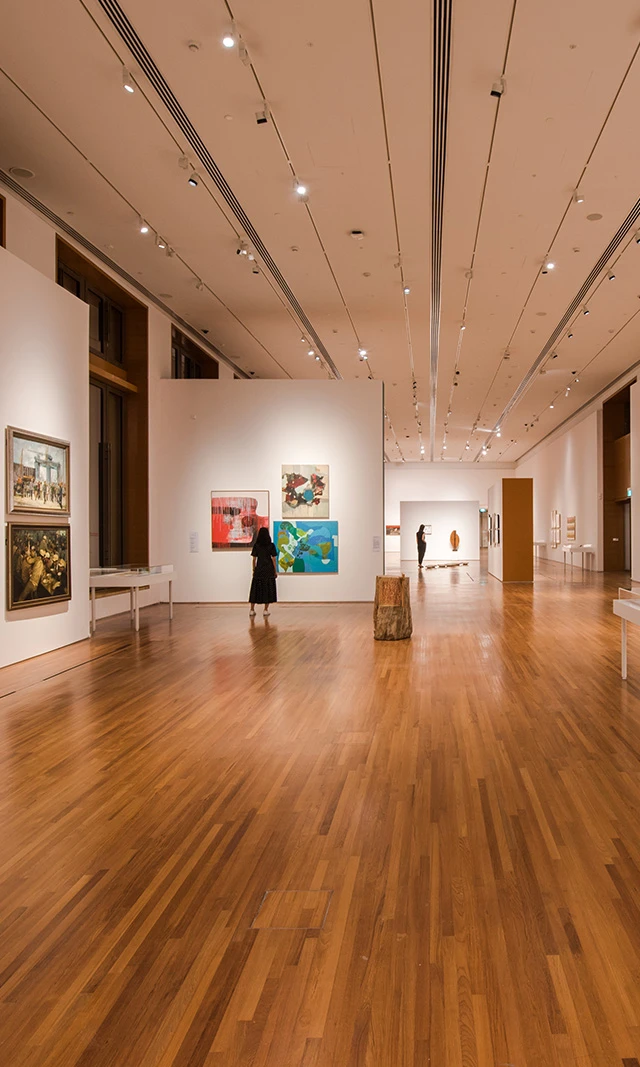
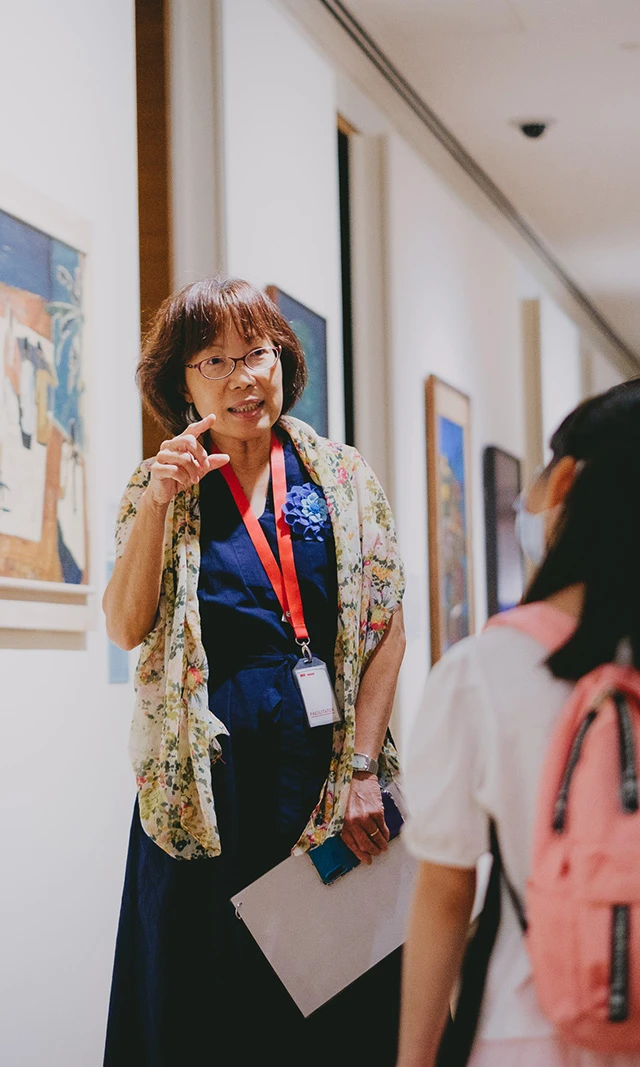
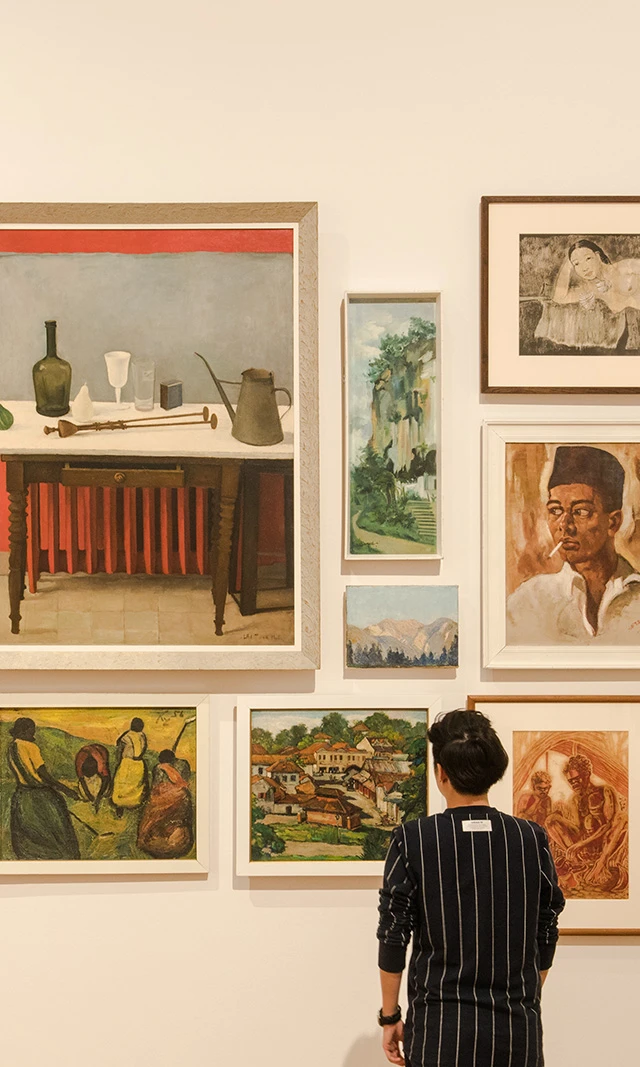



.jpg/_jcr_content/renditions/cq5dam.web.1280.1280.jpeg)